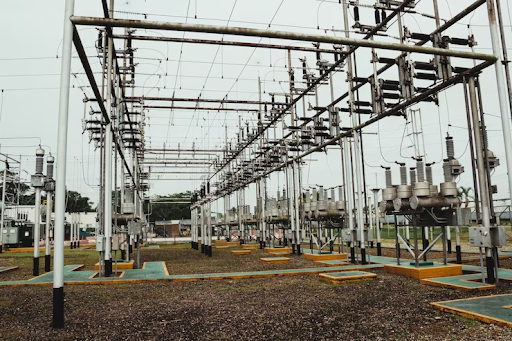In the world of electricity distribution, strength transformer substations stand as crucial nodes within the grid infrastructure, facilitating the transmission and distribution of electricity from generating stations to cease-customers.
Over the years, advancements in engineering have led to vast improvements within the layout of these substations, improving their performance, reliability, and functionality.
Power Transformer Substations
Power transformer substations serve as pivotal hubs within the energy grid, wherein voltage ranges are transformed, managed, and dispensed to meet the demands of consumers.
These facilities house diverse equipment, such as transformers, switchgear, circuit breakers, and monitoring systems, all running in harmony to ensure the safe and efficient transmission of electrical electricity.
Modular and Compact Substation Designs
One exquisite innovation in power transformer substation layout is the improvement of modular and compact answers. Traditional substations regularly required massive land regions for set up, making them impractical in densely populated urban areas or far flung locations.
However, modular substations feature prefabricated additives that can be without difficulty transported and assembled on-web page, minimizing space necessities and decreasing set up time and expenses.
Digitization and Smart Grid Integration
The integration of virtual technologies and clever grid competencies represents some other considerable development in energy transformer substation design. Modern substations are equipped with advanced tracking, manipulation, and automation systems that permit actual-time information series, analysis, and optimization of electrical networks.
By leveraging sensors, communique networks, and predictive analytics, those clever substations beautify grid resilience, reliability, and efficiency, even as permitting remote operation and preservation tasks.
Enhanced Safety and Resilience Features
Safety and resilience are paramount considerations in power transformer substation layout, specifically in the face of evolving environmental challenges and cybersecurity threats.
Innovations in insulation substances, fireplace suppression structures, and physical security features assist mitigate operational dangers and make sure the integrity of crucial infrastructure.
Furthermore, the adoption of redundant systems, fault-tolerant designs, and grid synchronization technology enhances the resilience of substations towards disruptions because of herbal disasters, system failures, or malicious assaults.
Environmental Sustainability and Energy Efficiency
In reaction to developing issues about environmental sustainability and electricity performance, present day power transformer substations are designed with a focus on minimizing environmental effect and optimizing energy intake.
Green substations contain eco-friendly substances, power-green components, and renewable power integration solutions to lessen carbon emissions and useful resource intake.
Renewable Energy Integration
Discuss how strength transformer substations are evolving to deal with the integration of renewable energy resources consisting of solar, wind, and hydroelectric power.
Explore improvements in grid interconnection technology, electricity storage solutions, and strength management structures that enable seamless integration of fluctuating renewable strength era into the grid.
Resilience to Climate Change
Highlight the significance of designing energy transformer substations to resist the effects of climate change, which includes severe weather events along with hurricanes, floods, and wildfires.
Discuss resilience-centered layout strategies, such as elevated substations, flood barriers, and hardened infrastructure, to mitigate dangers associated with weather-related dangers.
Remote Monitoring and Maintenance
Explore the role of faraway monitoring and upkeep technology in improving the performance and reliability of strength transformer substations.
Discuss the benefits of actual-time monitoring, predictive upkeep algorithms, and circumstance-based totally tracking structures in detecting capacity equipment disasters, optimizing performance, and minimizing downtime.
Grid Modernization and Grid Edge Technologies
Discuss the transition closer to an extra decentralized and dynamic power grid and the results for power transformer substation design.
Explore the combination of grid aspect technology which includes disbursed power assets, microgrids, and demand response systems into substation architecture to decorate grid flexibility, resilience, and efficiency.
Cybersecurity Measures
Highlight the significance of cybersecurity in safeguarding electricity transformer substations towards cyber threats and attacks.
Discuss exceptional practices for imposing strong cybersecurity measures, such as community segmentation, encryption protocols, intrusion detection systems, and normal security audits, to guard crucial infrastructure from cyber vulnerabilities.
Community Engagement and Aesthetic Considerations
Address the significance of community engagement and stakeholder consultation in the layout and siting of power transformer substations.
Explore strategies for incorporating aesthetic issues, landscaping, and architectural layout factors into substations to decrease visible impact and beautify network attractiveness.
Regulatory Compliance and Standards
Discuss the position of regulatory compliance and industry standards in shaping the layout and operation of energy transformer substations.
Highlight the importance of adhering to protection guidelines, environmental suggestions, and technical standards set forth by way of regulatory government and enterprise agencies to ensure the reliability, safety, and interoperability of substations.
Collaborative Research and Development
Highlight the role of collaborative studies and development initiatives in driving innovation in energy transformer substation layout.
Discuss partnerships among industry stakeholders, studies institutions, and authorities companies geared toward advancing generation, growing new substances, and improving operational practices to address rising challenges and possibilities in substation design.
Conclusion
In conclusion, engineering excellence drives non-stop innovation inside the layout of power transformer substations, transforming the panorama of electricity infrastructure and paving the way for an extra sustainable, resilient, and efficient electrical grid.
By embracing modular and compact designs, digitization and clever grid integration, more advantageous safety and resilience capabilities, and environmental sustainability measures, modern substations exemplify the intersection of generation, sustainability, and reliability in electricity distribution.


